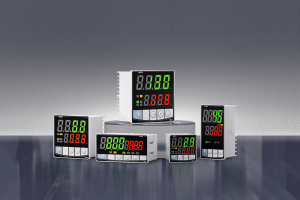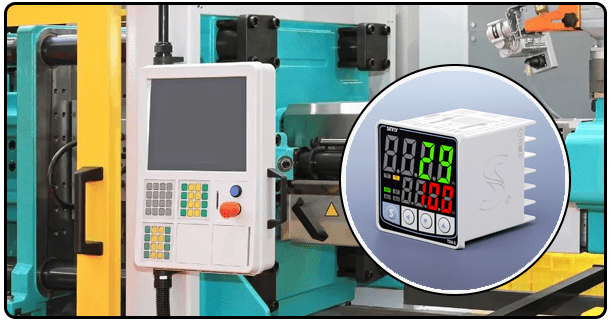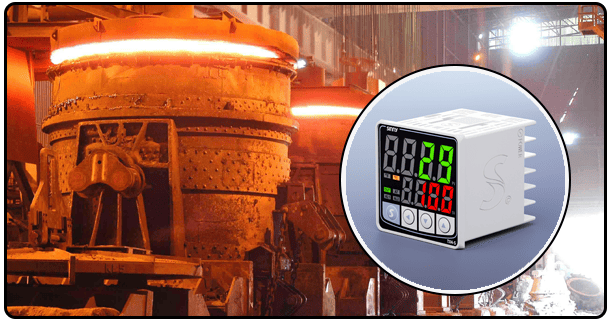The Complete Guide to PID Temperature Control
Our comprehensive guide will teach you how to fine-tune a PID controller. Learn how to achieve accurate temperature control using manual or automated tuning.
1. Introduction
Understanding PID Parameters
Understanding the key parameters is crucial to tuning a PID control.
Proportional (P): This parameter controls how the output responds to the error. This parameter determines the amount of output change in response to the temperature difference between setpoint and actual.
Integral (I): This parameter is used to adjust the response in relation to the cumulative error. This helps to eliminate residual error in steady state after proportional control.
Derived (D) : Modifies the response according to the rate at which the error changes. This parameter helps to dampen oscillations, and enhance the response stability of the system.
2. Initial Configuration
It is important to check that all components of the hardware are working optimally before tuning PID parameters. Start by following these steps.
Turn On the PID Control: Make sure that the controller is powered on and all the connections are secured.
Initialize PID values: Set the integral and derivative gain to zero. You can then focus your attention on the proportional gain.
3. Manual tuning method
Manual tuning is a process of adjusting PID parameters by trial and error until you achieve the system response that you desire. The following are the steps to manual tuning.
Proportional tuning
Increase the proportional gain gradually until you start to see oscillations in the system. The proportional gain may be too high if the system oscillates.
To achieve stable responses without oscillations, reduce the gain proportionally by half.
Integral tuning
To eliminate steady-state errors, increase the integral gain by small increments. Adjust the integral gain until the system is able to respond adequately to any changes in setpoint.
Monitor system response to ensure it doesn't become instabile due excessive integral gains.
Derivative Tuning:
Increase the derivative gain slowly to reduce oscillations.
Adjust the derivative gain in order to achieve a balance between responsiveness and stabilty. The derivative gain must be sufficient to stabilize the system, but should not cause excessive damping.
4. Automatic Tuning Methods
A number of automated methods simplify the tuning process for PID parameters. The Ziegler Nichols and Cohen Coon methods are two commonly used tuning methods.
Ziegler-Nichols Method:
Add the gains integral and derivative to 0.
Increase the proportional gain gradually until you reach a system that oscillates with a constant frequency. The ultimate gain is this value.
The oscillation period is also known as the final period.
Ziegler-Nichols tuning equations can be used to determine the PID parameter using ultimate gain and the period.
Cohen-Coon Method:
Step test the reaction curve to find out what it is.
Note the parameters of the reaction curve, such as the gain in the process, the dead time and the time constant.
Calculate the PID setting using these parameters and the Cohen-Coon tuning equations.
Troubleshooting and Testing
It is important to check the temperature of the system after tuning the PID. These steps will help you troubleshoot and test your system.
System Test: Check the response of the system to changes made in the setpoint. Ascertain that the setpoint temperature remains within the acceptable range and the system's stability.
Troubleshoot Issues If your system is not performing as you expect, look for problems with the wiring, sensor settings, or PID. Verify that all the connections are tight and calibrated temperature sensors.
5. Final Install
Follow these steps to install the controller once it has been tuned.
Installing the PID Relay and Controller: Place the relay and PID controller in a project case to keep them safe from moisture and dust.
Best SEO Practices for your Content
Follow these SEO Best Practices to optimize your content.
Keyword Research
Find relevant keywords for tuning PID controllers. Find keywords that have a high volume of searches and are low in competition using tools such as Google Keyword Planner and Semrush.
Page Optimization
Title tag Include your keyword in the first part of the title tag. As an example: "How to tune a PID temperature controller: A comprehensive guide".
Meta description Write an original and captivating meta description including your keyword. Our comprehensive guide will teach you how to adjust a PID controller. Learn how to achieve accurate temperature control using manual or automated tuning.
Headings Use HTML heading tags to organize your content. As an example, you could use "How to Tune PID Temperature Controllers" in H1, "Understanding PID Parameters", and "Manual Tuning Method".
Quality of Content
Create informative, high-quality content to address the search intent of users.
Avoid duplicating content, and make sure all the information you provide is original.
Give clear, detailed instructions that are accompanied by pictures or diagrams.
External and Internal Linking
Internal links are a great way to link related pages on your site. Link to articles on different temperature sensors, or PID controller applications.
Credibility can be enhanced by including external links. Link to articles or manuals on temperature control, for example.
6. Image Optimizer
Use descriptive file names with alt texts that include keywords to optimize images. For example, "pid-controller-tuning-methods.jpg" with alt text "Methods for tuning a PID temperature controller".
User experience
Backlink building
To increase the authority of your website, build backlinks on reputable sites. Share your content with industry blogs, online forums and communities.
You can also collaborate with others to create content and expand your audience.























